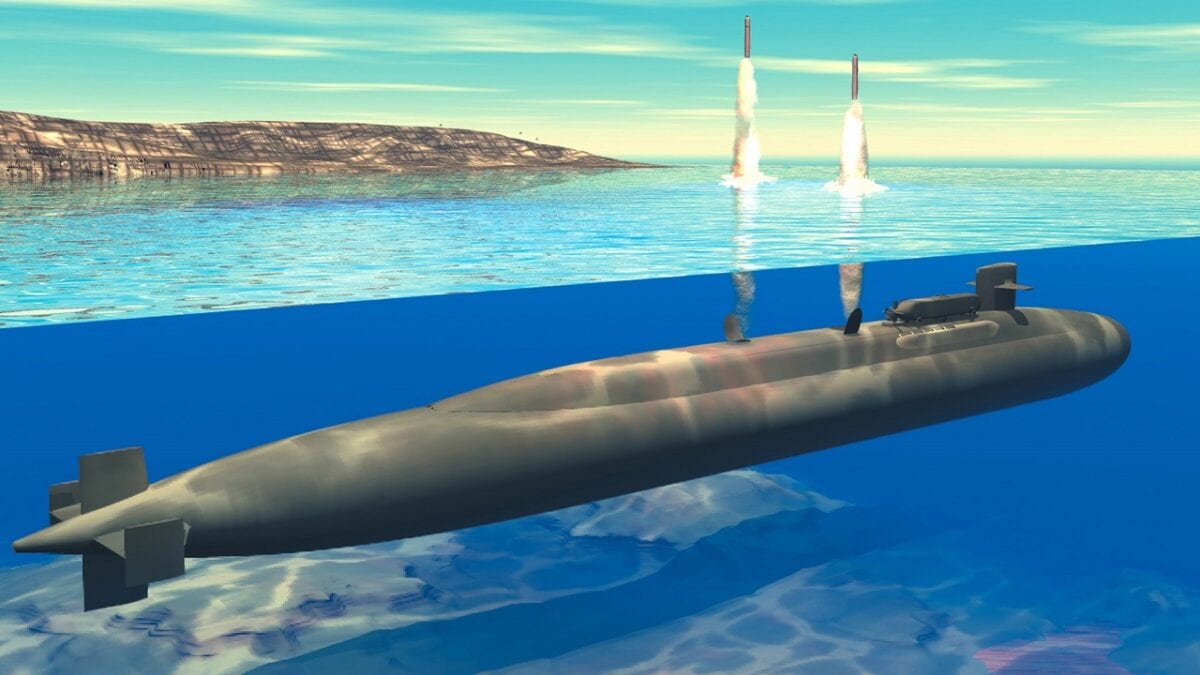China Hates U.S. Navy SSGN Ohio-Class Submarines As They Can’t Easily Counter Them Nor Sink Them: Back in 2010, the People’s Republic of China reportedly became the second country in the world after the U.S. to successfully use a land-based high-altitude anti-ballistic missile system.
According to U.S. officials, the PRC did not provide prior notification of the launch. Since this behavior suggested an uptick in hostility, the U.S. responded with a show of force that may surprise some today.
Here Come the Ohio-Class SSGN Submarines
Three of the Navy’s Ohio-class cruise missile submarines (SSGN) simultaneously surfaced in Western Pacific and Indian Ocean waters, “allegedly to signal U.S. displeasure over Chinese missile tests in the East China Sea.”
Over the last decade, Beijing has prioritized the modernization of its military including its ballistic missile arsenal. The PRC conducted its most recent test this June, bringing the tally of publicly announced land-based anti-ballistic missile tests to six. Since tensions between Washington and Beijing have dramatically increased since 2010, could the Navy’s fleet of SSGNS – a capability China does not possess – resurface?
The origin story of the U.S. Navy’s SSGNs
Following World War II, the U.S. began seeking out ways to modernize its submarine technology while implementing its growing missile capabilities in light of growing Soviet aggression. By the mid-1950’s, the Navy developed the world’s first nuclear-powered submarine, Nautilus (SSN-571).
Prior to the production of the Nautilus, the Navy designed the Regulus I missile which represented the first sea-launched missile that could be fitted with a nuclear warhead. However, the service soon envisioned a new weapon system that would allow the submarine to launch a missile while submerged, a capability the Regulus did not possess. This innovation spearheaded the Navy’s ballistic missiles and submarine launch platforms. Between 1959 and 1967, 41 ballistic missile submarines were commissioned.
In the 1970’s, the USS Ohio entered service as the eventual successor of the Navy’s ballistic missile submarines. By the end of the Cold War, the first four Ohio-class submarines – Ohio, Florida, Michigan and Georgia – were expected to retire by 2022.
However, the 1994 Nuclear Posture Review determined that the U.S. only needed 14 of its SSBNs to provide the level of deterrence necessary. Therefore, four of the remaining SSBNs were transformed into conventional land attack and SOF platforms by the Navy. The four submarines, now SSGNS, represent more than half of the Submarine Force’s vertical launch payload capacity combined. Unlike their SSBN counterparts which carry nuclear weapons, the SSGNs feature specialized operations mission centers, additional sensor and communications systems among other capabilities that enable them to function in shallower waters and still remain undetected.
What are the SSGNs capabilities?
According to The Drive, “22 out of the SSGN’s 24 missile tubes are now capable of launching up to seven BGM-109 Tomahawk cruise missiles rather than the nuclear-armed Trident submarine-launched ballistic missiles (SLBMs) fired by Ohio SSBNs, while the remaining two missile tubes were converted lockout chambers for embarked SEALs.”
Additionally, “Two dry deck shelters can be installed atop the SSGN’s hull while linked to the lockout chambers, allowing Navy SEALs to enter or exit the shelters and deploy and recover swimmer delivery vehicle mini-submarines.” The SSGN’s concealment and strength undoubtedly plays a pivotal role in deterring U.S. adversaries since these submarines can be anywhere at any given time. In 2020, the USS Ohio, Michigan, Florida and Georgia were refitted with additional capabilities. Today the four SSGNs represent more than half of the Submarine Force’s vertical launch payload capacity combined as they carry up to 154 Tomahawk TLAM (land attack) or Tactical Tomahawk missiles.

Artist’s concept of an Ohio-class SSGN launching Tomahawk Land Attack Missiles.
Navy resurfaced SSGNs to deter Russia
About a month prior to Moscow’s invasion of Ukraine, the Navy’s Sixth Fleet made the location of USS Georgia (SSGN 729) public off the coast of Cyprus. The disclosure of the service’s top-of-the-line submarines is rare, which suggests tensions were high enough for the U.S. to want to send a reminder to its adversaries that these extremely formidable vessels exist at their doorsteps.
Considering the PRC’s increasingly hostile rhetoric and behavior in the South China Sea, perhaps the Navy will have one if its SSGNs pop up nearby to project strength and to curb Beijing’s aggression in the region.
Maya Carlin is a Middle East Defense Editor with 19FortyFive. She is also an analyst with the Center for Security Policy and a former Anna Sobol Levy Fellow at IDC Herzliya in Israel. She has by-lines in many publications, including The National Interest, Jerusalem Post, and Times of Israel.
From 19FortyFive

